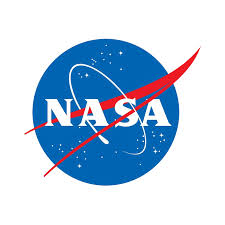NASA and Google Build AI “Space Doctor” for Missions to the Moon and Mars

As humanity prepares to push deeper into space than ever before, two unlikely partners—NASA and Google—are teaming up to solve one of the biggest challenges of long-term spaceflight: medical care.
On Earth, astronauts have round-the-clock access to doctors, flight surgeons, and hospitals. In orbit aboard the International Space Station (ISS), emergency evacuation back to Earth is possible in a matter of hours. But once crews venture to the Moon or Mars, that safety net disappears. Communication delays stretch from seconds to nearly an hour, and a medical evacuation could take weeks—or in the case of Mars, many months.
That reality is what led to the creation of the Crew Medical Officer Digital Assistant (CMO-DA), an AI-powered virtual doctor being co-developed by NASA and Google.
Why Astronauts Need an AI Doctor
Medical care in space has always been a concern. Astronauts receive basic training in CPR, wound care, and common space-related conditions like decompression sickness and carbon dioxide exposure. They also have access to a pharmacy and specialized equipment aboard the ISS. But for future missions:
-
Moon missions could have up to a 10-second communication delay. A two-week evacuation window means astronauts must often treat themselves.
-
Mars missions raise the stakes further. Signals can take 40–45 minutes to travel back and forth, and any emergency return would take six months across more than 500 million kilometers.
This makes independent medical capability not just helpful—but absolutely essential.
How the AI Assistant Works
The CMO-DA is being designed as a Clinical Decision Support System (CDSS), built on top of Google’s Vertex AI platform. It uses a combination of:
-
Speech recognition (astronauts can describe symptoms verbally)
-
Text input (medical notes or descriptions can be typed in)
-
Visual data (photos of wounds, scans, or health monitoring devices)
With these multimodal inputs, the AI can:
-
Diagnose medical issues ranging from minor injuries to complex conditions like cardiovascular problems.
-
Recommend treatments, step by step, tailored to the limited medical kits on board.
-
Support decision-making for both astronauts and Earth-based flight surgeons, offering predictive analytics and symptom summaries.
Early Testing and Simulations
So far, the system is in proof-of-concept testing. NASA astronauts have been running simulations where they interact with the AI during realistic scenarios:
-
Treating cuts, sprains, and burns.
-
Handling respiratory symptoms in low-gravity conditions.
-
Responding to cardiac irregularities where immediate action is critical.
Initial results suggest that the AI can provide reliable, accurate diagnoses and clear treatment pathways. Engineers are now fine-tuning the system with input from medical experts to minimize errors in high-stakes environments.
More Than Just Space
While the technology is being built with astronauts in mind, its impact could be much wider. Remote healthcare on Earth—rural villages, disaster zones, or military operations—faces many of the same challenges as deep space: limited access to doctors and delayed responses. A portable version of the CMO-DA could revolutionize telemedicine by giving local caregivers an always-available AI partner.
Artemis and Beyond
NASA’s Artemis program, which will return humans to the Moon for the first time since the Apollo era, is the immediate proving ground for the CMO-DA. Artemis II and Artemis III are set to lay the foundation for a sustained lunar presence, and eventually, Mars expeditions in the 2030s.
In those missions, astronauts will rely not just on rockets, habitats, and life support systems—but also on AI medical tools like the CMO-DA to survive and thrive far from Earth.
Final Word
NASA and Google’s partnership is about more than gadgets—it’s about human survival in the harshest environments imaginable. If successful, the Crew Medical Officer Digital Assistant will be the astronaut’s closest companion, bridging the gap between human resilience and artificial intelligence.
In Google’s own words: this isn’t just a project about space exploration. It’s about redefining the future of healthcare—whether you’re 400,000 kilometers away on the Moon, 225 million kilometers away on Mars, or simply in a remote part of Earth where doctors are hard to reach.